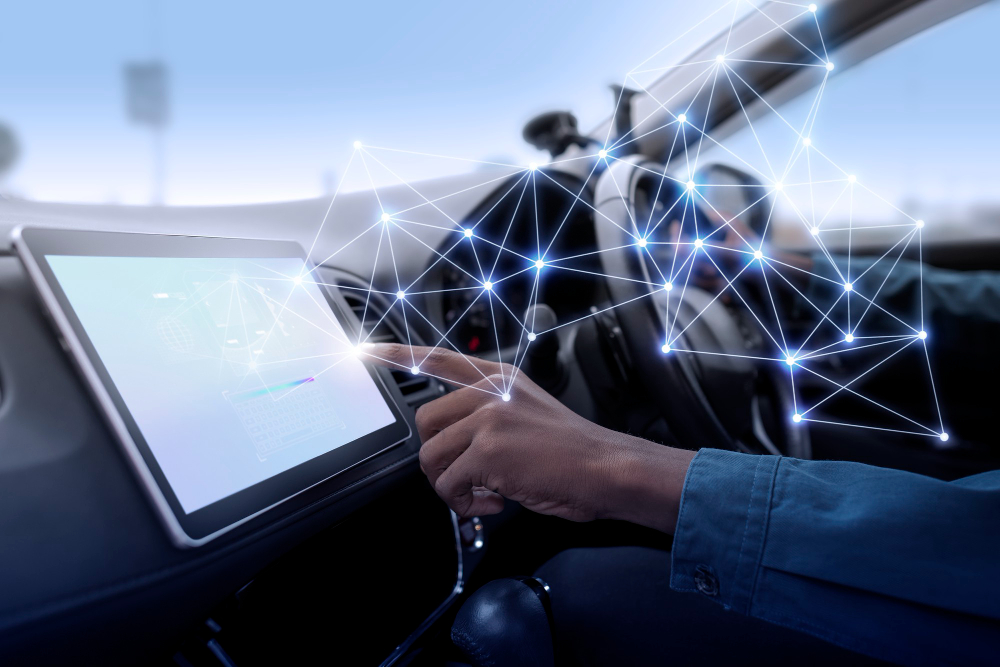Automotive and Transportation
Gen AI in Automotive and Transportation
Generative AI, a subset of artificial intelligence that focuses on creating new content such as text, images, or designs, has become a transformative force across various industries, including automotive and transportation. This technology leverages machine learning models to generate content that mimics human-like creativity, allowing businesses to innovate and optimize processes in ways that were previously unimaginable.
In the automotive and transport industry, Generative AI offers immense potential, ranging from enhancing vehicle design to improving supply chain logistics. Below are two primary use cases where Generative AI can make a significant impact in this sector.

Design and Development of Vehicles
The design and development process of vehicles is a complex and resource-intensive task that requires the integration of various disciplines, including engineering, aesthetics, and ergonomics. Generative AI can revolutionize this process by providing innovative solutions that significantly reduce time and costs while enhancing creativity and efficiency.

Vehicle Design Optimization
Generative AI can be utilized to optimize vehicle designs by generating a vast array of design alternatives based on specific parameters such as aerodynamics, material strength, weight, and cost. Traditionally, automotive designers would create a few design options manually and then test them through simulations and prototypes. However, Generative AI can automate this process by generating thousands of design variations in a fraction of the time, allowing engineers to explore more possibilities and identify the best design more quickly.
For example, in the design of electric vehicles (EVs), weight reduction is critical to maximizing range and efficiency. Generative AI can analyze structural requirements and material properties to generate lightweight designs that maintain structural integrity and safety. These AI-generated designs can then be fine-tuned by engineers to create a final product that meets all performance criteria.
Moreover, Generative AI can help designers explore unconventional design solutions that might not be immediately apparent to human designers. By simulating various physical forces and constraints, the AI can propose innovative shapes and configurations that push the boundaries of traditional vehicle design. This can lead to the development of vehicles with improved aerodynamics, fuel efficiency, and overall performance.
Interior Customization and Ergonomics
The interior design of vehicles is another area where Generative AI can be highly beneficial. As consumer preferences continue to evolve, automotive manufacturers are increasingly focused on providing personalized and ergonomic interiors that enhance the driving experience. Generative AI can assist in this by creating custom interior layouts tailored to individual preferences and needs.
For instance, Generative AI can analyze data on a driver's height, weight, and driving habits to generate a personalized seat and dashboard layout that maximizes comfort and accessibility. Additionally, AI can optimize the placement of controls, screens, and other features to ensure an intuitive and user-friendly interface. This level of customization can significantly enhance customer satisfaction and brand loyalty.
Furthermore, Generative AI can be used to create dynamic interiors that adapt to different driving conditions or passenger needs. For example, AI could generate designs for seats that automatically adjust their shape and support based on the driver's posture or fatigue levels. This type of intelligent interior design can improve safety and comfort, making driving a more enjoyable experience.

Supply Chain and Logistics Optimization
The automotive and transport industry relies heavily on complex supply chains and logistics networks to ensure the timely delivery of parts, materials, and finished vehicles. Generative AI can play a crucial role in optimizing these processes by analyzing vast amounts of data to generate efficient and cost-effective logistics solutions.

Route Optimization and Predictive Maintenance
Generative AI can be used to optimize transportation routes for delivering vehicles, parts, and materials. By analyzing traffic patterns, weather conditions, and historical data, AI can generate the most efficient routes that minimize delivery times and fuel consumption. This not only reduces costs but also helps in reducing the environmental impact of transportation activities.
For example, a logistics company could use Generative AI to analyze data from GPS systems, traffic cameras, and weather forecasts to generate real-time route adjustments for its fleet of delivery trucks. This would allow the company to avoid traffic jams, road closures, and other disruptions, ensuring that deliveries are made on time and with minimal fuel consumption.
In addition to route optimization, Generative AI can also be used for predictive maintenance of vehicles and transportation equipment. By analyzing data from sensors and historical maintenance records, AI can generate predictions about when and where equipment is likely to fail. This allows companies to schedule maintenance proactively, reducing the risk of unexpected breakdowns and costly repairs.
For instance, an AI system could analyze data from a fleet of trucks to predict when a particular component, such as a brake pad or tire, is likely to wear out. The system could then generate a maintenance schedule that ensures the component is replaced before it fails, reducing the risk of accidents and minimizing downtime.
Inventory Management and Demand Forecasting
Effective inventory management is critical for automotive manufacturers and suppliers to ensure that parts and materials are available when needed without overstocking. Generative AI can assist in this by analyzing data on production schedules, order histories, and market trends to generate accurate demand forecasts and inventory management strategies.
For example, an automotive manufacturer could use Generative AI to analyze data from its production line and suppliers to generate predictions about the demand for specific parts and materials. This would allow the manufacturer to optimize its inventory levels, reducing the risk of stockouts and excess inventory. By generating more accurate demand forecasts, AI can also help manufacturers reduce waste and lower costs.
In addition, Generative AI can be used to optimize the layout and organization of warehouses and distribution centers. By analyzing data on order patterns, storage capacity, and retrieval times, AI can generate efficient warehouse layouts that minimize the time and cost of picking and packing orders. This can improve the overall efficiency of the supply chain and reduce the time it takes to get products to market.
For instance, an AI system could analyze data from a fleet of trucks to predict when a particular component, such as a brake pad or tire, is likely to wear out. The system could then generate a maintenance schedule that ensures the component is replaced before it fails, reducing the risk of accidents and minimizing downtime.

Strategic
Partners








Conclusion
Generative AI is poised to revolutionize the automotive and transport industry by offering innovative solutions that enhance vehicle design, customization, supply chain management, and logistics optimization. In vehicle design, AI can generate optimized designs that improve performance, safety, and fuel efficiency, while also enabling personalized and ergonomic interiors that enhance the driving experience. In supply chain and logistics, AI can generate efficient routes, predictive maintenance schedules, and inventory management strategies that reduce costs and improve operational efficiency. As the automotive and transport industry continues to evolve, Generative AI will play an increasingly important role in driving innovation and competitiveness. By embracing this technology, companies can not only improve their products and services but also gain a strategic advantage in a rapidly changing market.
We will contact
Get a call back
Accordion Widget for Elementor allows you to present plenty of content in a foldable and concise way.
Accordion Widget for Elementor allows you to present plenty of content in a foldable and concise way.
Accordion Widget for Elementor allows you to present plenty of content in a foldable and concise way.
Accordion Widget for Elementor allows you to present plenty of content in a foldable and concise way.
Accordion Widget for Elementor allows you to present plenty of content in a foldable and concise way.

